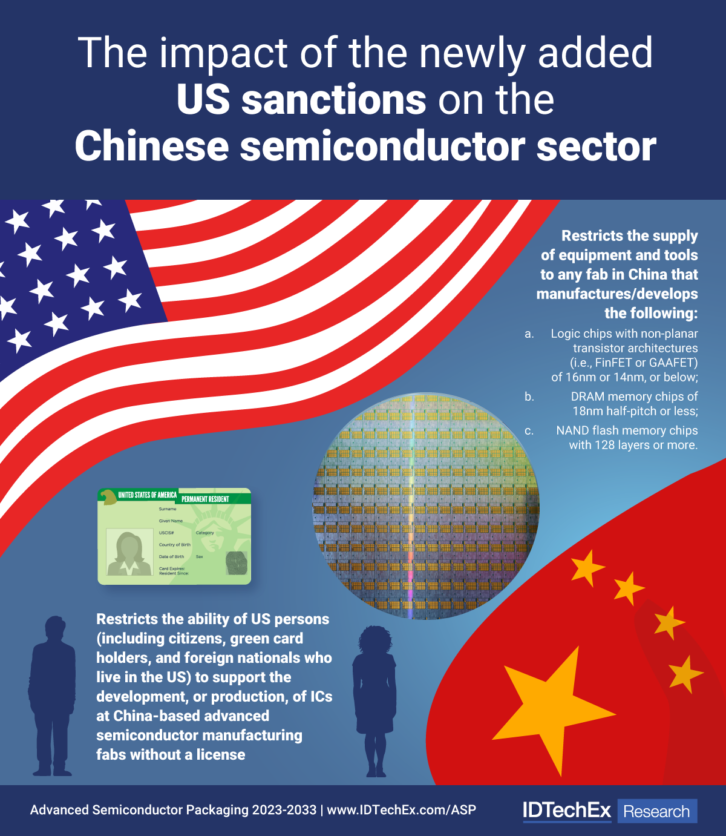It has, to put it mildly, been an interesting period for global electronics. The combination of the enduring impact of the pandemic and a severe supply chain crisis – arguably the worst since World War II – has heralded a new volatility in the market that has brought unwelcome uncertainty to vendors, distributors, installers and other service providers. With many sources expecting at least some aspects of the supply chain crisis to continue well into 2023, it’s a problem that is not about to dissipate.
But now, it seems, another potential ‘front’ could be about to open up in the ‘semiconductor wars’. It’s also one that reflects a distinctly geopolitical subtext to industry that was, arguably, ushered in by the more protectionist attitudes of the Trump administration during the late 2010s.
 This time, however, the impetus is coming from the government of his successor, Joe Biden. In an extensive new set of export controls, the administration has asserted that US companies must cease providing Chinese chipmakers with equipment that can produce advanced chips unless they obtain a license first. Also included are limits on some semiconductor production items and transactions for specific end-use cases of some integrated circuits and chips.
This time, however, the impetus is coming from the government of his successor, Joe Biden. In an extensive new set of export controls, the administration has asserted that US companies must cease providing Chinese chipmakers with equipment that can produce advanced chips unless they obtain a license first. Also included are limits on some semiconductor production items and transactions for specific end-use cases of some integrated circuits and chips.
According to a revealing report in The Guardian on October 19, the US “also wants to increase its export controls to include semiconductor products and software, technology, and other things used to develop and make integrated circuits. In a further restriction, US citizens and green card holders will also be banned from working on certain technology for Chinese companies and entities”.
NEW MEASURES
There is little doubt as to the motivation behind the US government’s semiconductor curbs. It has made little secret of its desire to slow the progress of the Chinese administration in both military and technological terms – not to mention the extensive crossover that occurs between those two areas. This is most apparent with regard to fears that China – possibly emboldened by Russia’s invasion of Ukraine – might soon take military action in Taiwan, which Beijing views as being part of China’s territory despite separate governance since 1949.
This is a growing concern on multiple levels, including its implications for the electronics industry. Taiwan has always been a dominant player in the worldwide supply of components, and that trend has continued into 2022. According to Statista, the Taiwan Semiconductor Manufacturing Company (TSMC) recorded a market share of just over 53% in the global semi-conductor foundry market. One of Taiwan’s largest companies, TSMC has frequently been cited as the world’s most valuable semiconductor company.
It remains to be seen whether the new commercial restrictions have any impact on China’s ambitions elsewhere, but certainly the US – and plenty of other nations – are seriously concerned. At the time of writing, the head of the US Navy had just warned that China could take action against Taiwan before 2024 – a lot earlier than some of the gloomier predictions made in recent months.
By their very nature, trade-related restrictions tend to have unpredictable – sometimes scattershot – results. Indeed, the Biden administration has acknowledged that the impact of its measures could be limited if other countries do not take a similar path. One official quoted by The Guardian remarked: “We recognise that the unilateral controls we’re putting into place will lose effectiveness over time if other countries don’t join us. And we risk harming US technology leadership if foreign competitors are not subject to similar controls.”
Putting possible international collaboration in this area to one side, the likely impact of the US government measures remains a subject of debate. Quoted once more in The Guardian, US author and renowned China analyst Bill Bishop was reported as describing the move as a “massive escalation” in his Sinocism newsletter: “We are still trying to understand the impacts of the new controls, and frankly I think many underestimate just how significant they are, both for technology supply chains and future developments, but more broadly for the US-China relationship.”
SUPPLY IMPLICATIONS
Elsewhere, however, there is evidence of more sanguine viewpoints – especially with regard to the implications for technology supply. Evidently this situation would be at serious risk of change if there was a shift in Taiwan’s control, but at least for now China’s limited stake in semiconductor supply per se should mean that any reduced capacity in this area does not have grave repercussions globally.
Chris Bull is lead market analyst at specialist research, analytics, data and consulting services company Futuresource. “The newly announced plans regarding manufacturers selling semiconductors into China will not affect the production of semiconductors themselves, as China produces only a minority of this market compared to other countries,” he says, adding that it could, however, “potentially have a knock-on effect by increasing costs for manufacturers that need to import these”.
Bull adds: “Futuresource does not expect the new announcements by the US to affect the market or availability of semiconductors as this only relates to US domestically manufactured semiconductors – primarily from Intel and Global Foundries – who occupy a comparably small share of market for the global stock of semiconductors.”
 The analyst also puts current developments in the wider context of a global supply of semiconductors that is no longer suffering from the adverse conditions that shaped the bleakest periods of the past two years. “The overall supply of semiconductors has largely recovered from the worst of the disruption seen throughout 2020-21,” says Bull. “Whilst there remain industries affected, such as automotive and other product categories that require the most complex chipsets, the broadest volume of the market is seeing a return to normality.”
The analyst also puts current developments in the wider context of a global supply of semiconductors that is no longer suffering from the adverse conditions that shaped the bleakest periods of the past two years. “The overall supply of semiconductors has largely recovered from the worst of the disruption seen throughout 2020-21,” says Bull. “Whilst there remain industries affected, such as automotive and other product categories that require the most complex chipsets, the broadest volume of the market is seeing a return to normality.”
Nonetheless, Bull implies that a new and lingering uncertainty has entered the global picture that may continue to throw up new challenges. “Despite improved supply, there remain other political issues, and the nature of semiconductor fabrication means that production is ‘sticky’ and cannot quickly change its operation around these challenges wherein they arise,” he says.
With any number of existing and potential pressure points around the world, it’s no wonder that fears of instability in Asia Pacific are serving to accelerate efforts around diversification of chip supply. For a variety of reasons, it may not often be possible for individual countries to become ‘independent’ with regard to components. But at the least, the logic of investigating secondary sources of supply is plain for all to see.
CHIP REQUIREMENTS
Counterpoint Research is a leading global tech market research firm, and in one of its latest commentaries on the subject remarked: “Many economies are currently at work to achieve self-dependence in meeting their chip requirements. But it takes years to build semiconductor fabrication facilities and much expenditure to maintain and upgrade them. Therefore, the idea of becoming ‘self-sufficient’ or ‘independent’ is not a viable option [in many cases]. Still, many economies like the US, EU and East Asian countries are calibrating their measures to indigenise as well as diversify the semiconductor supply chain to have a more resilient supply network.”
The call to broaden production has even come from some tech giants. In August, the newly appointed European head of Intel, Frans Scheper, said that the UK’s lack of a microchip strategy was set to leave it in a disadvantaged position in terms of semiconductor research and supply. Whilst the UK government has expressed its intention to reduce dependence on the Asian semiconductor industry, the current situation does contrast markedly with that in the EU, where a specific item of proposed legislation unveiled in February 2022 – the European Chips Act – contains a stated objective of having 20% of the world’s microchips manufactured in the region by 2030.
It is almost certain that these efforts will step up in the coming months as the global picture becomes even more uncertain. It remains to be seen whether the US move signals a new phase of politicisation around electronics, but it would seem foolish to bet against it. At the very least, it behoves AV companies across the board to take the long view and incorporate contingencies within their operational strategies that allow them to minimise the impact of any future supply challenges.







